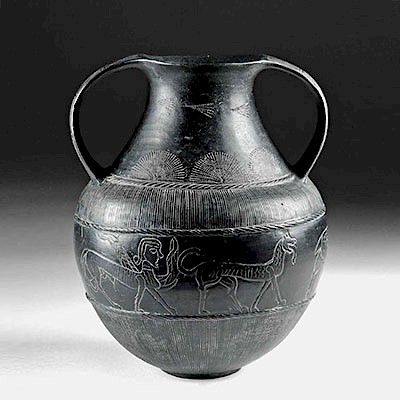Chinese Song Dynasty Gilded Stone Head of a Lohan
Lot 132
About Seller
Artemis Gallery
686 S Taylor Ave, Ste 106
Louisville, CO 80027
United States
Selling antiquities, ancient and ethnographic art online since 1993, Artemis Gallery specializes in Classical Antiquities (Egyptian, Greek, Roman, Near Eastern), Asian, Pre-Columbian, African / Tribal / Oceanographic art. Our extensive inventory includes pottery, stone, metal, wood, glass and textil...Read more
Categories
Estimate:
$7,500 - $11,250
Absentee vs Live bid
Two ways to bid:
- Leave a max absentee bid and the platform will bid on your behalf up to your maximum bid during the live auction.
- Bid live during the auction and your bids will be submitted real-time to the auctioneer.
Bid Increments
| Price | Bid Increment |
|---|---|
| $0 | $25 |
| $300 | $50 |
| $1,000 | $100 |
| $2,000 | $250 |
| $5,000 | $500 |
| $10,000 | $1,000 |
| $20,000 | $2,500 |
| $50,000 | $5,000 |
| $100,000 | $10,000 |
| $200,000 | $20,000 |
About Auction
By Artemis Gallery
Mar 21, 2019
Set Reminder
2019-03-21 10:00:00
2019-03-21 10:00:00
America/New_York
Bidsquare
Bidsquare : Fine Ancient | Asian | Ethnographic Art
https://www.bidsquare.com/auctions/artemis-gallery/fine-ancient-asian-ethnographic-art-3967
Featuring classical antiquities, ancient and ethnographic art from cultures encompassing the globe, plus fine art. Egyptian, Greek, Roman, Etruscan, Near Eastern, Asian, Pre-Columbian, Native American, African / Tribal, Oceanic, Spanish Colonial, Russian, Fine Art, so much more! Artemis Gallery info@artemisgallery.com
Featuring classical antiquities, ancient and ethnographic art from cultures encompassing the globe, plus fine art. Egyptian, Greek, Roman, Etruscan, Near Eastern, Asian, Pre-Columbian, Native American, African / Tribal, Oceanic, Spanish Colonial, Russian, Fine Art, so much more! Artemis Gallery info@artemisgallery.com
- Lot Description
East Asia, China, Song Dynasty, 960 to 1270 CE. Hand-carved from a large piece of grey stone, a just under life-size head of a Lohan, his visage presenting a tranquil, meditative countenance and elongated ears, common in most depictions of Buddha and the Arhats - with nice traces of glistening gilding. In Mahayana Buddhism, Arhats (or Lohans in Chinese) were understood as the original followers of Buddha who followed the Eightfold Path and attained the Four Stages of Enlightenment and deliverance from mere earthly existence. Arhats have successfully arrived at what is known as the 'other shore' and are at peace for all eternity. Gone are all 'asavas' or desires for sensual pleasure, incorrect viewpoints, and ignorance. Size: 6" W x 8.25" H (15.2 cm x 21 cm)
Lohan, also called Arhat, means a Buddhist ascetic; the word is a transliteration of Sanskrit and came from India. Paintings and sculptures of Lohan figures emerged during the Tang Dynasty (618 to 907 CE) and became popular - and refined - during the Song. Stone sculptures like this one were made to adorn huge Buddhist cave temples cut out of the mountains of northern and central China. Lohans are known for possessing immense wisdom, fortitude, bravery in the face of evil, and supernatural powers. They have become known as the guardian angels of Buddhist temples. In Theravada Buddhist traditions an Arhat is regarded as a 'perfected person' who has attained Nirvana. In other Buddhist traditions the term has been used for people far advanced along the path of Enlightenment but who have not reached full Buddhahood. A striking example of this revered spiritual being.
Provenance: private St. Louis, Missouri, USA collection; ex private Atlanta, Georgia, USA collection
All items legal to buy/sell under U.S. Statute covering cultural patrimony Code 2600, CHAPTER 14, and are guaranteed to be as described or your money back.
A Certificate of Authenticity will accompany all winning bids.
We ship worldwide and handle all shipping in-house for your convenience.
#128944A section from a larger sculpture with small losses to tips of ears and surface wear with gilt losses. Still a mesmerizing piece of Buddhist visual culture.Condition
- Shipping Info
-
All shipping is handled in-house for your convenience. Your invoice from Artemis Gallery will include shipping calculation instructions. If in doubt, please inquire BEFORE bidding for estimated shipping costs for individual items.
-
- Buyer's Premium



 EUR
EUR CAD
CAD AUD
AUD GBP
GBP MXN
MXN HKD
HKD CNY
CNY MYR
MYR SEK
SEK SGD
SGD CHF
CHF THB
THB

















